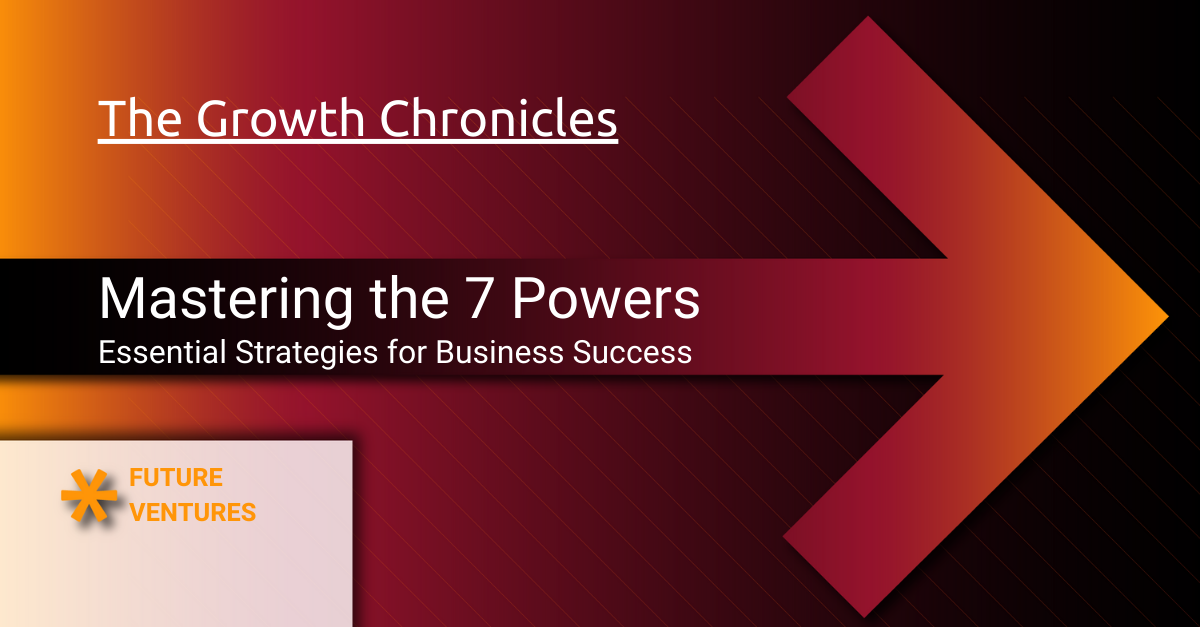Understanding the Scaling Up Process: Key Steps for Successful Growth
A No-BS Guide to Building Companies That Actually Scale
You’ve cracked the code. Your startup has found product-market fit. Customers are buying. Revenue is flowing. Congratulations! You’ve survived the startup valley of death that claims 90% of new ventures.
At this point, you are moving beyond the tech startup and the initial startup phase, marked by unique challenges and key differences from scaleups, such as smaller teams, high uncertainty, and the need to pivot quickly to adapt to feedback and market demands. But you’re about to face an entirely different beast.
Scaling growth isn’t just “doing more of the same, but bigger.” It’s a fundamental transformation that will test every assumption you’ve made about your business. While startups are defined by their ability to pivot quickly and react to change, this becomes far more challenging as you scale and the organization matures. Both scaleups and startups share similar beginnings, but their paths diverge significantly as they develop and grow.
The companies that master this transition don’t just grow, they dominate. Those that fail? They become cautionary tales whispered in Silicon Valley coffee shops. The difference isn’t luck. It’s understanding the key difference between a startup’s hustle and a scale-up’s discipline.
This in-depth guide covers the essential steps, strategies, and challenges involved in the scaling-up process, helping startups successfully transition into thriving scale-ups.
Quick Definitions (so we’re speaking the same language)
- Startup: The term "startup" refers to early-stage, innovative companies that often utilize new technologies and have a culture of rapid growth and experimentation, before they reach the scale-up phase.
- Scaleup: A company that has stabilized its business model and achieved sustained rapid growth, typically with at least 10 employees and over 20% annual growth in revenue or staff.
The Foundation: Understanding What You've Built
Before you can scale, you need to be brutally honest about where you stand.
Most founders struggle with self-assessment. They’re either delusionally optimistic or paralyzed by imposter syndrome. Understanding which stage of development your startup is in and recognizing the different stages you must progress through is critical before attempting to scale.
💡 The transition from startup to scaleup often requires implementing scalable processes to handle increased operations, ensuring the business can grow without collapsing under its own weight.
Self-Assessment for Scaling Readiness
To successfully navigate the scaling-up process, founders and leaders need to conduct a thorough self-assessment of their company’s readiness. This reflection helps identify strengths, weaknesses, and areas that require improvement before committing to rapid growth. Here are key questions and criteria to evaluate:
1. Product-Market Fit
- Have you achieved product market fit with validated customer demand?
- Are customers actively seeking your product, reducing the need for push marketing?
- Can you confidently predict customer acquisition costs and lifetime value?
2. Operational Capability
- Are your core processes documented, repeatable, and scalable?
- Can your team handle a significant increase in customers or users without breaking?
- Do you have reliable data to understand what drives growth and where to focus your efforts?
3. Financial Health
- Is your funding sufficient to support scaling efforts, including technology, personnel, and marketing?
- Do you have a clear budget and financial plan to sustain growth without jeopardizing stability?
4. Team and Leadership
- Do you have the right team in place with clearly defined roles and responsibilities?
- Are leaders prepared to transition from a startup mindset to managing a larger, structured organization?
- Is your company culture strong and adaptable to growth?
5. Market and Growth Strategy
- Have you identified scalable markets or segments with high growth potential?
- Do you have a plan for expanding into new markets or launching new products?
- Are you prepared to invest in digital marketing and repeatable sales strategies?
👉 Download or take the Scaling Self-Assessment to better understand where you are on the journey and what you need to do to be successful.
By honestly answering these questions, you can determine whether your company is ready to transition into the scale-up phase or if further optimization is necessary. This self-assessment serves as a foundation to build a robust scaling strategy that drives sustained growth and long-term success.
Business Growth vs. Scaling Growth: The Critical Distinction
Here’s where most entrepreneurs get it wrong.
- Business growth is measured in linear terms. The more salespeople you hire, the more sales you get. As you build more features, you can serve more customers. Thus, in turn, it increases operational complexity. In this traditional model, a company can take on more clients as it adds new resources, such as capital, technology, or personnel. As the company grows, it often needs to hire more people to support the increased workload and sustain revenue growth. Simple, predictable, and ultimately limiting.
- Scaling growth is exponential. It’s about building systems that can handle 10x growth without requiring 10x resources. This is the key difference: scaling enables exponential growth, where revenue increases rapidly without a proportional increase in costs or resources. Think Uber’s platform handling millions of rides with a relatively small team, or Airbnb’s marketplace connecting hosts and guests globally without owning a single property.
💡 Key Takeaway: True scaling means breaking this direct link between resources and revenue.
| Business Growth | Scaling Growth |
|---|---|
| Linear progression | Exponential potential |
| Resource-dependent | System-dependent |
| Founder-centric | Process-centric |
| Manual workflows | Automated systems |
| Local focus | Global scalability |
💡 Key Takeaway: The companies that understand this distinction build for scale from day one. Those that don’t hit a wall around $1-5 million in revenue, where every additional dollar requires proportionally more effort to generate.
Business Scaling: The Strategic Framework
The Scale-Up Readiness Assessment
Before you pour gasoline on the fire, make sure it’s not going to burn down your house. Ask yourself these questions:
Product-Market Fit Validation:
- Are customers actively pulling your product from you, or are you still pushing it to them?
- Can you predict customer acquisition costs and lifetime value with confidence?
- Do you have organic growth through word-of-mouth and referrals?
- Have you achieved product market fit, demonstrating that your offering truly meets a validated market need?
👉 It is essential to have a solid operational foundation and have achieved product-market fit before scaling, as these are the key elements required to succeed.
Operational Foundation:
- Can your team handle a 3x increase in customers without reaching its breaking point?
- Are your core processes documented and repeatable?
- Do you have reliable data on what’s actually driving growth and how to throttle up or down?
👉 If you can’t answer these confidently, you’re not ready to scale. You’re ready to optimize.
Market Opportunities: The Expansion Matrix
Smart scaling isn’t about going everywhere at once. It’s about methodical expansion into adjacent opportunities, such as entering new industries, launching innovative services, or leveraging emerging technologies and innovations.
| Impact / Risk | Low Risk | High Risk |
|---|---|---|
| High Impact | Core Market Expansion: Geographic expansion to similar demographics Feature extensions that serve existing customers better Channel diversification within the current market Expanding into related industries Offering new services that complement your core business Leveraging proven technologies to enhance offerings | New Market Exploration: Different customer segments Adjacent product categories Platform business model evolution Entering entirely new industries Launching disruptive services Adopting cutting-edge technologies and driving innovations |
| Low Impact | Optimization Plays: Pricing experiments Operational efficiency improvements Customer experience enhancements | Experimental / Risky Ventures: Markets with unproven demand and limited size Sectors with uncertain compliance costs Niche markets in unstable regions Innovation projects with long development cycles but limited commercial potential Resource-intensive ventures requiring significant investment but serving a small customer base |
The mistake?
Jumping straight to high-risk plays when you haven’t maximized low-risk opportunities. Amazon spent years perfecting book sales before expanding into other areas. For example, Netflix successfully scaled by expanding from DVD rentals into streaming services, leveraging new technologies and innovations to enter the entertainment industry. Other examples include Deliveroo, which grew by offering new delivery services across multiple industries and regions.
👉 Download or take the Market Oppotunities Assessment to score and prioritize where what expansion opportunities to pursue.
Company Culture: The Scale-Up Transformation
The culture that got you here won’t get you there.
During scale-up, company culture needs intentional evolution, not accidental drift. Leaders play a crucial role in maintaining and evolving this culture, preserving core values as the organization expands and grows. To help founders focus on building and fostering the right culture during scaling, here is a practical framework presented as a table for easy understanding and action:
| Culture Focus Area | Key Actions | Founder/Leader Role | Outcome/Benefit |
|---|---|---|---|
| Core Values Preservation | - Define and communicate core values clearly across all levels - Regularly revisit and reinforce values | Champion and embody core values consistently | Maintains identity and alignment during rapid growth |
| Employee Engagement | - Conduct regular feedback sessions and surveys - Recognize and reward contributions | Foster open communication and responsiveness | Keeps morale high and reduces culture dilution |
| Role Clarity & Skill Focus | - Clearly define roles and responsibilities - Align team members’ strengths with roles | Ensure hiring and development focus on core competencies | Maximizes productivity and job satisfaction |
| Leadership Development | - Train leaders to manage larger, structured teams - Encourage delegation and empowerment | Transition from hands-on to strategic leadership | Builds scalable leadership and avoids founder bottleneck |
| Cultural Add Hiring | - Hire for cultural add, not just fit - Emphasize diversity and complementary skills | Lead recruitment with culture and skills alignment in mind | Enhances innovation and cultural richness |
| Communication Evolution | - Implement structured communication channels - Promote transparency and information flow | Model and enforce clear, consistent communication | Reduces misunderstandings and fosters trust |
| Innovation Mindset | - Encourage systematic innovation processes - Balance stability with experimentation | Support and reward innovation aligned with company goals | Sustains competitive edge while scaling |
| Scaling Culture Metrics | - Measure cultural health alongside financial metrics - Track engagement, turnover, and alignment | Use data to inform culture initiatives and adjustments | Enables proactive culture management and continuous improvement |
This table serves as a practical guide for founders and leaders to intentionally cultivate and sustain a strong company culture through the scaling-up process. By focusing on these areas, companies can maintain employee engagement, preserve their entrepreneurial spirit, and drive sustainable growth.
From Startup Chaos to Scale-Up Structure
The Transition Challenge:
Your scrappy 10-person team, where everyone wore multiple hats, must evolve into a structured organization with clear roles, responsibilities, and processes. Startups typically have less defined roles, whereas scaleups begin to establish clear hierarchies and responsibilities among team members. As your company scales, the number of employees increases significantly, requiring effective management of a larger workforce. Scaling up not only helps companies create jobs but also expands the variety and number of jobs available within the organization, contributing to broader employment growth. This isn’t about becoming corporate. It’s about becoming effective at scale.
Cultural Elements That Must Evolve:
- Decision-Making: From founder intuition to data-driven processes
- Communication: From informal chats to structured information flow
- Hiring: From cultural fit to cultural add with specific skills
- Innovation: From random experiments to systematic innovation processes
The companies that successfully navigate this transition maintain their entrepreneurial DNA while incorporating operational excellence. Netflix kept its culture of freedom and responsibility while building world-class processes. Stripe maintained engineering excellence while scaling globally.
Building Scalable Infrastructure
Your infrastructure, both technical and organizational, must anticipate future needs, not just current ones.
Technical Scalability:
- Cloud-first architecture that can handle traffic spikes
- API-driven systems that enable rapid integration
- Data infrastructure that supports real-time decision making
- Security systems that scale with user growth
- Adoption of new technologies to automate and simplify operations, supporting scalable growth
Organizational Infrastructure:
- Clear role definitions and career progression paths
- Performance management systems that scale beyond direct management
- Knowledge management systems that preserve institutional knowledge
- Communication tools that work across time zones and teams
- Scalable operation processes and systems are essential to handle increased growth and ensure long-term sustainability
Practical Guide to Innovation and Product Development for Scaling Founders
Innovation is the engine that drives the leap from startup to scaleup. Here’s a straightforward, step-by-step approach for scaling founders to harness innovation and product development effectively:
1. Confirm Product-Market Fit
- Validate demand: Ensure your product truly meets a market need by gathering customer feedback and tracking organic growth.
- Predictability: Be confident in your customer acquisition costs and lifetime value to plan for sustainable growth.
2. Build a Scalable Business Model
- Design repeatability: Develop products and services that can be sold repeatedly without requiring reinvention each time.
- Focus on scalability: Create processes that support delivering your offering efficiently across new markets and to a larger customer base.
3. Leverage Digital Marketing
- Expand reach: Use digital marketing channels to reach a broader audience without a proportional increase in resources.
- Optimize campaigns: Continuously monitor and refine marketing efforts to maximize return on investment.
4. Assemble the Right Team
- Hire for skill sets: Bring on team members whose strengths align with scaling needs, such as product development, marketing, and operations.
- Define roles: Clearly outline responsibilities to transition from startup multitasking to scale-up specialization.
5. Secure Adequate Funding
- Plan finances: Ensure you have sufficient capital to invest in technology, personnel, and marketing that support rapid growth.
- Engage investors: Communicate your scalable model and growth potential to attract funding.
6. Implement Repeatable Processes
- Document workflows: Create clear, repeatable processes for product development, sales, and customer support.
- Automate where possible: Use technology to automate routine tasks, freeing your team to focus on innovation and growth.
7. Maintain a Culture of Continuous Innovation
- Embed innovation: Make product development an ongoing priority, not a one-time event.
- Stay customer-focused: Regularly gather feedback and adapt your offerings to evolving market needs.
Example in Action
Imagine a tech startup launching a software platform:
- The early focus is on achieving product-market fit and attracting early adopters.
- As it scales, the company invests in digital marketing to reach new markets.
- It develops repeatable sales strategies and hires specialized staff.
- Continuous innovation and process improvements enable it to sustain rapid growth and become an industry leader.
By following these practical steps, scaling founders can transform innovation from a buzzword into a powerful engine for growth. Focus on building a scalable model, hiring the right people, leveraging digital marketing, and embedding continuous innovation to create jobs, fuel exponential growth, and succeed in competitive markets.
Scaling Strategies: The Playbook
The Three Pillars of Sustainable Scaling
1. Scalable Processes: From Art to Science
Every key business process must be thoroughly documented, accurately measured, and continually optimized to ensure optimal performance. This includes:
- Sales Process: Predictable lead generation, qualification, and conversion
- Product Development: Systematic feature prioritization and release management
- Customer Success: Automated onboarding and proactive support
- Hiring: Structured interview processes and onboarding programs
Think McDonald's, but for your industry. Every location can deliver consistent quality because the processes are bulletproof.
2. Technology as a Force Multiplier
Technology should eliminate manual work, not just digitize it. Focus on:
- Automation: Anything repeatable should be automated
- Integration: Systems should talk to each other seamlessly
- Analytics: Real-time visibility into business performance
- AI/ML: Predictive capabilities that improve decision-making
3. Team Architecture for Scale
Traditional org charts break at scale. You need:
- Cross-functional teams: Reduce handoffs and increase ownership
- Clear accountability: Every metric has an owner
- Distributed decision-making: Empower teams closest to the work
- Continuous learning: Systematic skill development and knowledge sharing
Scaling a Business: The Execution Framework
Phase 1: Foundation (Months 1-6)
- Audit current processes and identify bottlenecks
- Implement basic automation and measurement systems
- Standardize core workflows
- Build an initial management structure
Phase 2: Systems (Months 6-18)
- Deploy scalable technology infrastructure
- Establish data-driven decision-making processes
- Create specialized teams and roles
- Implement performance management systems
Phase 3: Optimization (Months 18+)
- Continuously improve process efficiency
- Expand into new markets and segments
- Build competitive moats through network effects or data advantages
- Develop next-generation leadership
The Metrics That Matter
Forget vanity metrics. Focus on the numbers that predict scalable success:
Efficiency Metrics:
- Revenue per employee
- Customer acquisition cost trends
- Time to value for new customers
- Process completion rates
Scalability Indicators:
- Gross margin improvement over time
- Automated vs. manual work ratio
- Customer self-service adoption
- Cross-functional team velocity
- Annual rate of growth in turnover or employees, as tracking the annual rate is essential for identifying scaleups and measuring sustained expansion
Leading Indicators:
- Net Promoter Score trends
- Employee engagement scores
- Feature adoption rates
- Predictive model accuracy
Common Scaling Pitfalls (And How to Avoid Them)
The Premature Scaling Trap
Scaling too early is like building a skyscraper on quicksand. You'll spend enormous resources only to watch it collapse. Signs you're scaling prematurely:
- High customer churn despite growth
- Declining unit economics
- Constant firefighting mode
- Team burnout and high turnover
The Culture Dilution Crisis
Growth for growth's sake can be detrimental to companies. Every new hire either reinforces or dilutes your culture. Without intentional culture preservation, you'll wake up one day running a company you no longer recognize.
Solution: Define your culture explicitly, hire for cultural add (not just fit), and measure cultural health as rigorously as financial health.
The Founder Bottleneck
You became successful by being involved in everything. But at scale, your involvement becomes the constraint. The hardest part of scaling isn't building systems; it's getting out of their way.
The Scale-Up Success Formula
Successful scaling comes down to this formula:
Product-Market Fit + Scalable Processes + Strong Culture + Data-Driven Decisions = Sustainable Scale
Attracting investors is often crucial for supporting the scale-up phase, as outside capital validates the business and enables further expansion.
Each element is necessary; none is sufficient alone. The entrepreneur plays a crucial role in orchestrating these elements, driving the transition from startup to scale-up and ensuring strategic growth. The scale-up phase requires adapting processes, management, and communication to handle increased complexity. Netflix didn’t just have great content. They built recommendation algorithms, delivery infrastructure, and a performance culture that enabled global expansion. This illustrates how a tech company can evolve from a startup to a mature organization, retaining some of its startup traits while achieving technological and market maturity.
Your Next Steps
Scaling up isn't about working harder; it's about working smarter. It's about working systematically. Start with these actions:
- Assess Your Foundation: Honestly evaluate your current scalability across people, processes, and technology
- Pick Your Battles: Choose 1-2 key bottlenecks to address first
- Measure Relentlessly: Implement systems to track what matters
- Build Your Team: Hire people who've scaled before
- Stay Patient: Sustainable scaling takes 2-3 years, not quarters
The companies that master scaling don't just grow; they compound their growth. They build businesses that get stronger with size, not weaker. The question isn't whether you can scale; it's whether you can scale effectively. It's whether you're disciplined enough to scale right.
Your startup has survived the Valley of Death. Now it's time to climb the mountain of scale. The view from the top is worth it.










